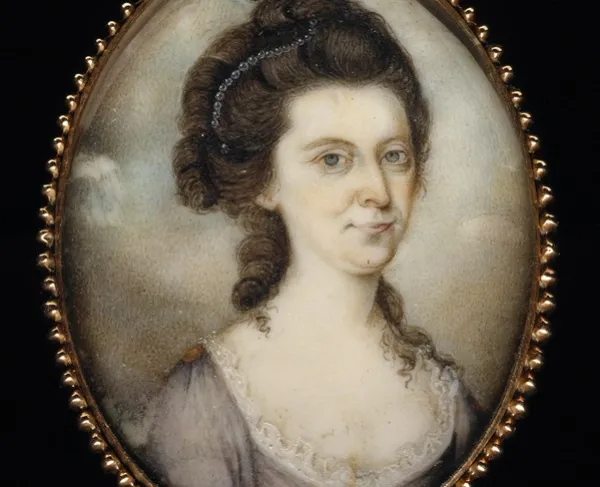Rachel Revere

Born on December 27, 1745, in Boston, Rachel was the daughter of Richard and Rachel Walker. She received a comparatively good education and lived with her family until she was twenty-seven. Two of her great-aunts lived near a home that Paul Revere rented, and she may be been acquainted with the family.
According to Revere family tradition, widower Paul Revere met Rachel Walker as he walked home from his silversmith shop on a summer evening in 1773. Revere’s wife, Sarah, had died on May 10, leaving six children and a five-month-old baby. The family story says that Paul Revere told Rachel about his baby daughter, and she offered to visit and try to help the little one. In the weeks that followed, she kept returning to care for the baby, who lived until September that year, and to be with the other children. Paul Revere started courting her, writing poetry describing her as “the Fair One nearest my Heart.”
Rachel Walker married Paul Revere on October 10, 1773. Her husband made her wedding ring, adding an engraving that read “Live Contented.” Following the wedding, Rachel became step-mother to the six surviving Revere children and was known for her kindness toward them. She joined her mother-in-law in managing the busy household.
In December 1773, the Sons of Liberty—a group that publicly protested British taxes—took part in the Boston Tea Party with Paul Revere in the front ranks. During the following year, Paul Revere was frequently away from home, riding to take messages and news throughout New England and to the First Continental Congress in Philadelphia. These ventures and when the British closed the port of Boston put an economic strain on many families, including the Reveres, and added to the challenges Rachel had while managing the household. Rachel and Paul Revere’s first child, Joshua, was born in December 1774, and in the future years, they had seven more children.
During the spring of 1775, Paul Revere made several message-carrying rides into the countryside, as he and other American leaders tried to anticipate the British military’s next move. The evening of April 18, he left home again to warn American leaders and rouse the militia companies with the news that the British were marching to Concord. Rachel may have known that this time her husband would face greater danger with British troops on the move and guarding the roads.
Days passed before Rachel heard from her husband, but she probably heard rumors and news. Paul Revere had made it to Lexington; a British patrol captured him, took his horse but let him go. By the end of April 19, 1775, the British expedition and reinforcements retreated to Boston after long marches, skirmishes and ambushes. American militia companies followed, closing off the city of Boston and trapping the British and the local residents. Eventually, Rachel Revere began corresponding through the lines with her husband, making plans for getting the family out of Boston with as many possessions as they could transport. Paul Revere could not return to British-controlled Boston, so Rachel—with the assistance of her teenage step-son—handled the move and escape from Boston, settling the family at Watertown. After the British troops left Boston in March 1776, the Revere family returned to their home in the city.
During the years of the American Revolution and beyond, Rachel continued to hold the Revere household together while her husband was frequently busy with local military duties. Five of her eight children survived childhood. She oversaw their early education and both boys and girls were encouraged to learn.
In 1810, Paul Revere wrote a poem, describing home life in his older age and Rachel’s happiness to sit companionably with him, set a fine table and go to visit their friends. Famous American artist Gilbert Stuart painted portraits of Rachel and Paul Revere, giving a glimpse of their appearance as they “lived contentedly” in their final years. Rachel Revere died on June 26, 1813 at age sixty-eight.





